
Are You 18 Or Over?
YesOr
No By clicking yes, you certify that you are over 18. By using this website, you agree to our legal disclaimer.605+ Cannabis Strains over 20 Breeders worldwide.
Table of Contents
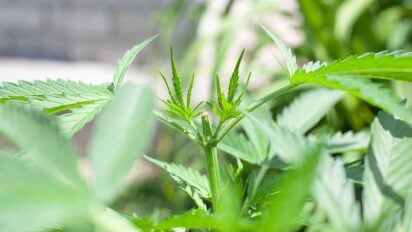
As a marijuana grower, you’re always wondering how to make the most out of your seeds. All cannabis cultivators want to acquire a large number of yield come harvest time. While there are some strains that can only provide a satisfactory number of yield, there are still techniques to help increase the harvest.
One procedure is topping, and it’s a method involving cutting the very top of your plants. In doing so, it promotes more lateral growth. In this post, we’re going to give you the necessary information you need to help you understand topping.
Traditional growing methods let cannabis plants focus the core of its energy pools on the main stalk known as cola. Most first-time marijuana growers will see one dominant cola with small stalks surrounding the center of the plant. These stalks produce small buds which impact the size and quality of the yield.
If left to their natural growing traits, indoor marijuana plants may require more maintenance than initially intended. Growers need to constantly adjust the lighting fixtures so the light and heat won’t be too near the tallest colas. The lower stalks, on the other hand, will be at a longer distance than the norm from the lights. Without proper topping methods, leaving indoor plants with traditional growing methods may lessen the size and quality of the final yield.
Topping can help multiple problems regarding cannabis cultivation. The process entails growers to help their plants redistribute growth hormones during the development or vegetative stage. Hormones from the main stalk will deliver new offshoots and stalks to the other areas of the plant.
Topping is only one of many tried-and-true techniques of increasing marijuana yields. Other training methods include:
The premise behind topping marijuana strains is to cut off the main stem. It results in the plant splitting in two. With the two growth tips that remain, both stems will now develop new flowers by harvest time. Each stem has the chance of turning into a bud or cola come flowering stage. However, it still requires proper maintenance practices from growers to provide quality and healthy yields.
Marijuana growers may top their plants once or a few times as long as the strain can still handle the stress. In doing so, it increases the number of bud sites. Make sure that you adjust your grow lights (when growing indoors) for all cola’s to receive the same amount of light. Also, it helps the plant grow with a flat and wide appearance.
It’s a suggested move to top marijuana plants when they’re still young. To top plants while in their early development stages can cause them to grow multiple colas. Furthermore, the growth patterns take place at roughly the same time. In doing so, it lets growers enjoy more yield within the same space under a grow light setup. However, don’t top too early and you risk harming or even killing the strain.
You can top your plants by either using your fingers or a pair of pruning scissors. By the end of the day, it falls to a matter of personal preference. Pruning scissors may make cleaner cuts but it may not be an ideal choice for topping young plants. Conversely, you can top marijuana strains as early as 1 week into their vegetative growth with your fingers. Still, novice growers may have some difficulty in using their hands to top plants.
Remember, cannabis plants are bendy and flexible during their development stage. The longer they stay in their vegetative stage, the thicker their stems and shoots. You may want to wait for 6 weeks into their vegetative phase for your plants to mature enough so you can use pruning scissors. Pinching the stems of plants is most effective for young cannabis strains.
Topping marijuana is a stressful endeavor for your plants. The strains require a 1 to 2-week recovery period at the least before you can proceed to the final stages of the harvest. Always allow a sufficient amount of time for your plants to heal, especially if you want to prune them further. One rule of thumb to follow if you want a speedy recovery is to feed your plants with additional nutrients. Vitamin B and silica are ideal during the healing stages and make sure to feed these nutrients immediately after cutting.
The number one benefit of topping marijuana strains is the significant amount of yields by harvest time. Veteran growers already know of the immense potential of topping regarding the number of yields. You can also combine topping with other training methods like the Screen of Green and Lollipopping techniques.
Another incentive is it helps facilitate an even canopy. Topped plants will fill the lateral grow area. Natural growth for marijuana plants may race up vertically. Topping plants won’t fully curb the vertical growth but spread the plant in a wider area.
Topping marijuana plants isn’t the perfect cultivation technique to produce better yields. It might be an ideal method for many growers, but it does have some shortcomings. First, the process will always create an open wound. If you don’t administer immediate care, then it may put unwanted harm to your plant. Like wounds on human skin, topping can invite fungi and other microbial pests to enter your plant.
While there are some drawbacks to the method, there are ways to prevent side effects from happening. You can speed up the recovery of the wound by giving your plants immediate care like feeding them vitamins.
Most cannabis strains are ready to top when they start developing three to four nodes. As a rule of thumb, growers should wait until plants have five to six nodes before topping. When cannabis strains have five or six nodes, they’ll recover quicker than plants with three or four nodes. It’s because the plant is in a more mature state when they have more nodes. More nodes mean a larger photosynthesis area.
Some growers may prefer to wait until they see some roots appearing at the base of the pot before proceeding to the top. Roots signify that strains are already at an established stage so they’ll recover quicker.
The deciding point for early topping depends on the chosen strain. There are rigorous-growing marijuana strains which can handle early topping without developing issues. Conversely, there are some marijuana plants that will only benefit from topping at a specific point.
Researching will be your ultimate weapon to know the right time to top plants. Some strains may not present problems when topped at their early development stages. Still, there are marijuana plants that require you to wait a few more weeks before you should top them.
After topping the main stem, it’s still possible to do topping once or twice more depending on the strain. Make sure that there’s an ample recovery time to do the next topping procedure. Once the plant establishes lateral branches, topping is possible to promote a bushy structure. It’s an essential procedure for some training techniques like the Screen of Green method.
As mentioned in a previous segment, topping should be done at certain times during your plants’ vegetative phases. Never top your plants during the flowering stage. Once the strain starts to flower, it cannabis strain changes its physical makeup. Also, the nutrient requirements differ during the flowering phase as the plant now focuses its energy pools to bring you yields.
Once you start switching to a 12-hour light and 12-hour darkness period, topping can cause unwanted stress to your marijuana plants. If done in this manner, it may cause you to acquire fewer yields come harvest time. Topping during the flowering stage may force the plant to use its energies to repair itself as opposed to giving you quality yields.
Topping and fimming are similar stress training methods to help increase marijuana yields. However, fimming presents higher stress to your plants as compared to topping. It requires a better understanding of your chosen strains and the whole process of growing marijuana before you should attempt the procedure.
If done successfully, fimming can bring forth more than four new top colas. Despite difficult in using fimming, it’s still a recommended procedure for micro-growers. Still, it’s best to use it on only one to two plants at a time.
Both stress training practices are ideal only during the vegetative stages of your plants. Fimming is slang for an “F*ck I Missed” approach so it favors a less precise method as compared to topping.
There are cannabis strains like a Kush that may have eight to ten internodes at best at the time of flowering. Topping these marijuana plants should be kept to a minimum. These plants tend to enjoy large single pineapple-looking colas instead of spreading the buds in the grow area.
Also, many Indica strains like to crowd with other large buds. These marijuana plants may have a chance of rotting or accidentally snapping after topping because some growers might cut off a bud cluster.
Another thing to consider when topping marijuana plants is using the technique on auto-flowering strains. Marijuana plants with ruderalis properties like Amnesia Haze may grow tall when left to its natural growing habits. Most Sativa strains can handle a top or two during the early development stage without causing difficulties in growers if any.
Always consider the health and vigor of your chosen strains before considering topping or any stress training method. After all, the entire point of topping is to help you achieve quality and sizable yields. The plants should still achieve normal growth patterns even after topping. Also, the flowers during the time of harvest should still show a lush green color for most strains.
It’s not a good idea to top slow-growing strains. Also, if there are plants with accidental damages, don’t continue to add to the pain endured by the strain. Only top recovered or healthy plants. Marijuana strains that have difficulty transpiring may not take the additional stress brought by topping or other similar techniques. As a result, their growths may become stunted which will lead to fewer yields.
Healthy marijuana plants, on the other hand, can quickly recover with the right topping methods. Don’t forget to feed your strains the right nutrients immediately after topping. Don’t be complacent when using this stress training method on your plants even if they’re healthy. Expert and gentle topping are still vital to achieve quality and sizable yields.
Also, using scissors may be a more suitable option for most marijuana growers than pinching the stems of plants with your hands. Properly cleaned pruning scissors enable cleaner cuts as opposed to using your bare hands. Novice growers who don’t practice clean pruning may give their strains unwanted infections during topping.
Finally, practice makes perfect. It may take some time to get used to properly topping your marijuana plants. Always consider your options before doing any stress training methods on your cannabis strains. By reaching the end of this post, you should now have a clearer idea on how to properly top your marijuana plants. We hope our guide helped you in achieving a better understanding of the procedure to lessen the possibilities of mistakes.

In recent years, the discourse surrounding secondhand marijuana smoke has gained significant attention, paralleling the legalization and increas

In the realm of cannabis culture, the practice of "wake and bake" holds a significant place, accompanied by both supporters and skeptics. As exp

Introducing the robust indica strain known as Critical Mass weed, a harmonious fusion of Afghani and Skunk #1 genetics. Delve into its essence,
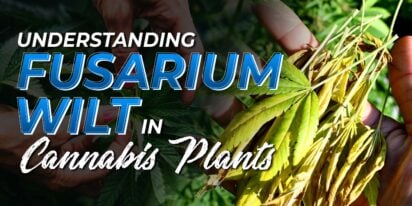
Fusarium wilt cannabis represents a significant threat to cannabis cultivation, necessitating a comprehensive understanding of its intricacies.

1980s were a time of profound cultural transformation, marked by iconic fashion, music, and movies. Alongside these trends, a unique facet of '8
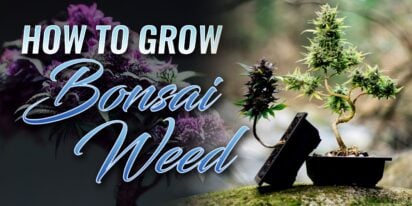
[ez-toc] In the deep history of cannabis cultivation, there exists a captivating and creative practice that combines the art of cultivation wit

For growers looking to get better yields and healthier cannabis plants, it's important to understand and control the cannabis soil pH levels. pH
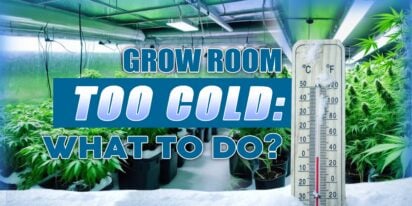
[ez-toc] In indoor gardening, maintaining an optimal temperature within your grow tent is crucial for the health and productivity of your plant

[ez-toc] Welcome to the delightful world of cannafudge crafting, where sweetness meets sophistication, and cannabis infusion adds a unique twis
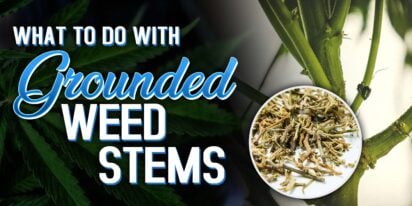
[ez-toc] You’ve finished trimming your weed, but what about those leftover stems? Don’t throw them away! These seemingly useless bits can a

Are You 18 Or Over?
YesOr
No By clicking yes, you certify that you are over 18. By using this website, you agree to our legal disclaimer.